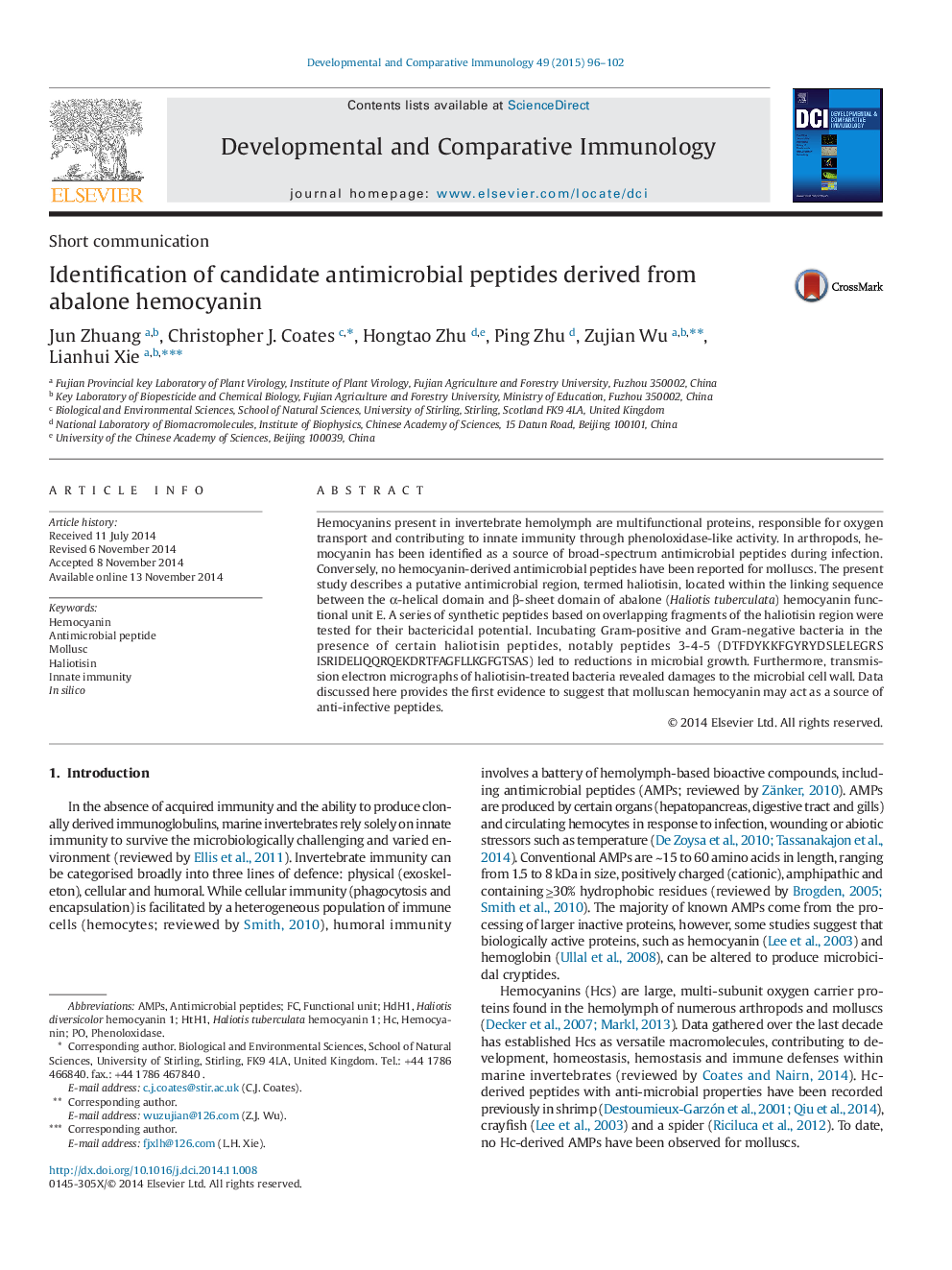| کد مقاله | کد نشریه | سال انتشار | مقاله انگلیسی | نسخه تمام متن |
|---|---|---|---|---|
| 2429086 | 1106476 | 2015 | 7 صفحه PDF | دانلود رایگان |
• Identification of a putative antimicrobial region on molluscan haemocyanin.
• The haliotisin region is highly (58–82%) conserved amongst molluscs.
• Haliotisin exists in a loop conformation on haemocyanin functional unit E.
• Synthetic haliotisin peptides inhibit the growth of Gram + and Gram – bacteria.
• Haemocyanin-derived AMPs attack microbial cell walls.
Hemocyanins present in invertebrate hemolymph are multifunctional proteins, responsible for oxygen transport and contributing to innate immunity through phenoloxidase-like activity. In arthropods, hemocyanin has been identified as a source of broad-spectrum antimicrobial peptides during infection. Conversely, no hemocyanin-derived antimicrobial peptides have been reported for molluscs. The present study describes a putative antimicrobial region, termed haliotisin, located within the linking sequence between the α-helical domain and β-sheet domain of abalone (Haliotis tuberculata) hemocyanin functional unit E. A series of synthetic peptides based on overlapping fragments of the haliotisin region were tested for their bactericidal potential. Incubating Gram-positive and Gram-negative bacteria in the presence of certain haliotisin peptides, notably peptides 3-4-5 (DTFDYKKFGYRYDSLELEGRSISRIDELIQQRQEKDRTFAGFLLKGFGTSAS) led to reductions in microbial growth. Furthermore, transmission electron micrographs of haliotisin-treated bacteria revealed damages to the microbial cell wall. Data discussed here provides the first evidence to suggest that molluscan hemocyanin may act as a source of anti-infective peptides.
Journal: Developmental & Comparative Immunology - Volume 49, Issue 1, March 2015, Pages 96–102
